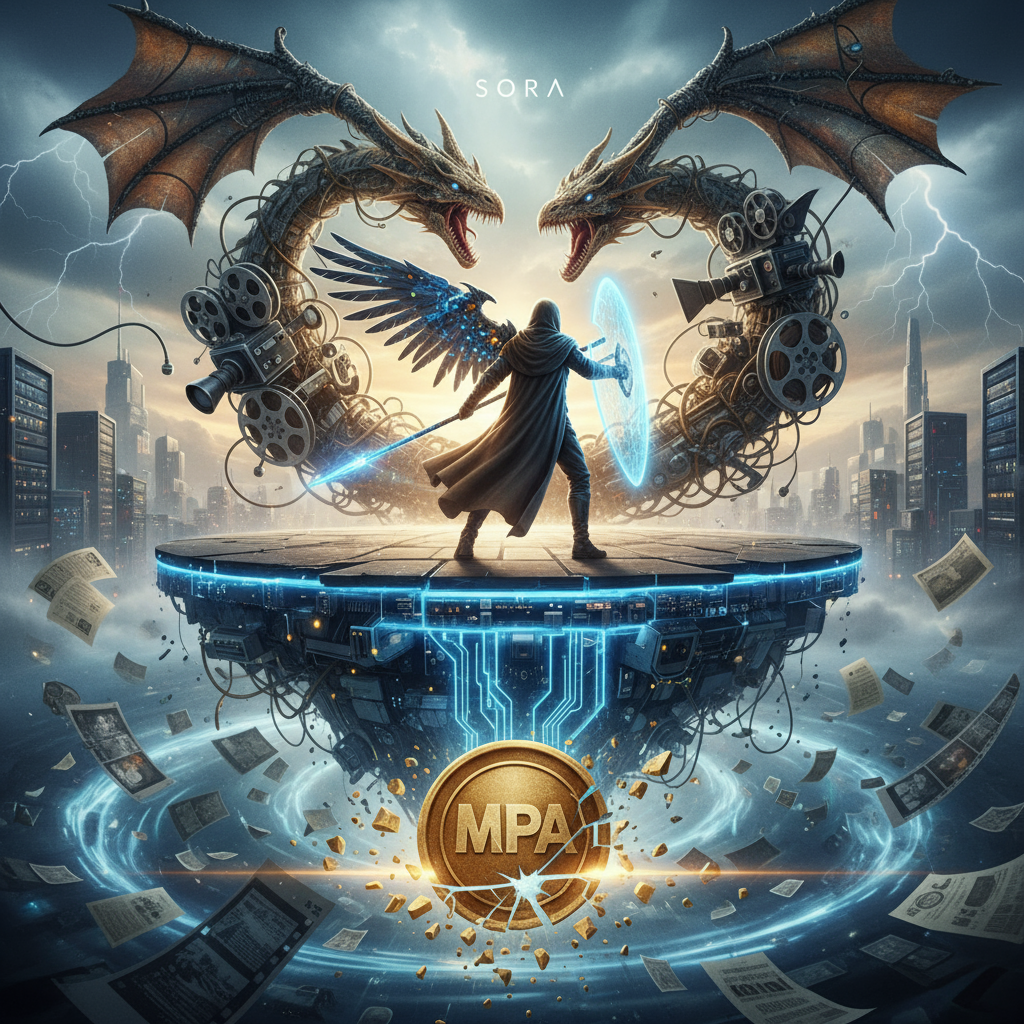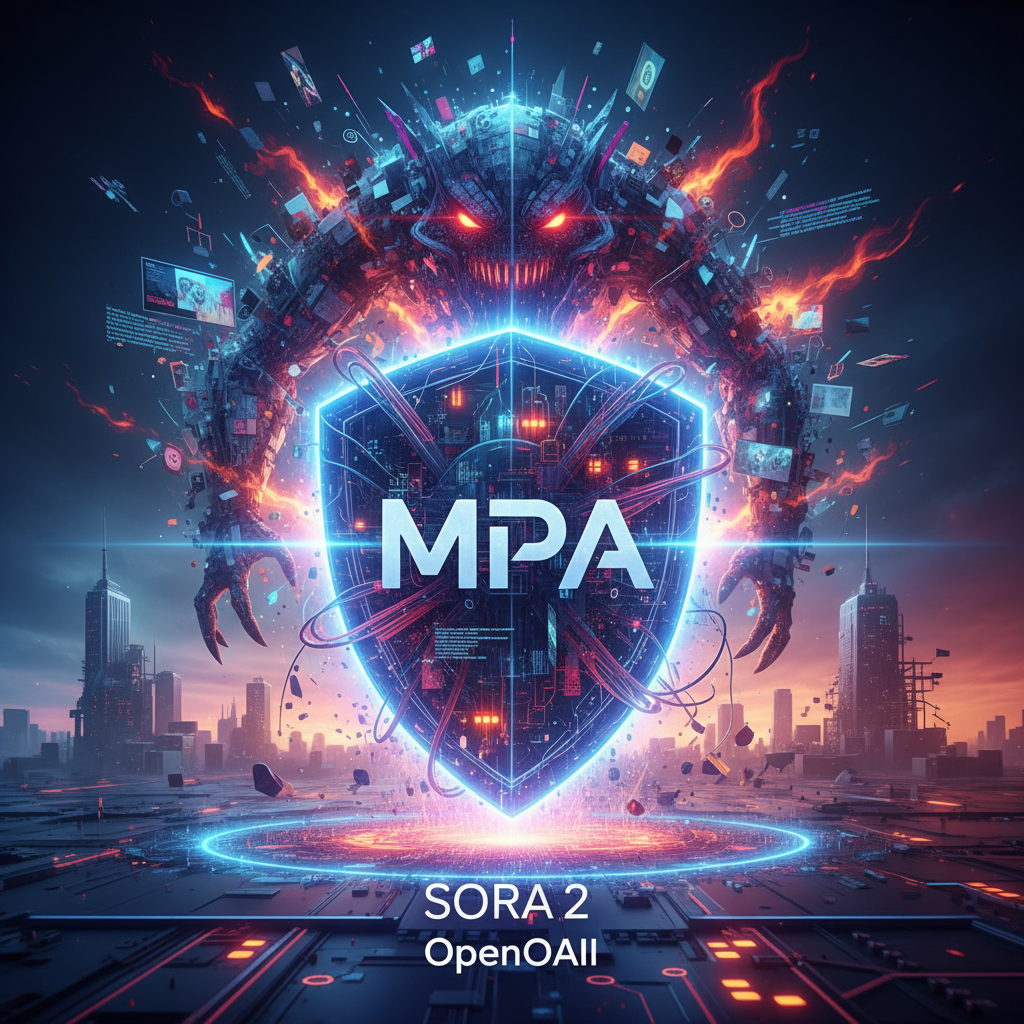Sora’s Cinematic Showdown: Can OpenAI Navigate the Copyright Minefield?

The future of video creation feels tantalizingly close, with OpenAI’s Sora offering a glimpse into a world where hyper-realistic video springs from mere text prompts. This groundbreaking AI, capable of generating incredibly sophisticated and believable footage, has sparked a whirlwind of excitement. However, as with all powerful new technologies, its arrival has also ignited a fierce debate, particularly regarding copyright. The Motion Picture Association (MPA), a powerful voice for major Hollywood studios, has issued a stark warning: OpenAI’s Sora 2 must cease enabling copyright infringement. This isn’t just a technical challenge; it’s a pivotal moment that will shape the legal and ethical landscape of AI-generated content.
The core of the MPA’s concern lies in the very nature of generative AI. These models are trained on massive datasets, often scraped from the internet, which inevitably include copyrighted material. The fear is that Sora could then be prompted to create new content that too closely mimics or directly infringes upon existing films, shows, or characters. This could range from generating a scene in the distinctive style of a specific director to directly recreating elements of a popular franchise, all without proper licensing or attribution. The implications for creators, studios, and the intellectual property ecosystem are profound.
The MPA’s Stance: Protecting IP in the Age of AI

The Motion Picture Association’s admonition is rooted in a fundamental principle: the protection of intellectual property. For decades, the MPA has been at the forefront of combating piracy and safeguarding the creative output of its member studios, including powerhouses like Disney, Paramount, Sony, Universal, Warner Bros., and Netflix. Their livelihood depends on the exclusive rights to exploit their creations.
The MPA views AI models like Sora as a new frontier in potential infringement, arguing that if these systems are trained on copyrighted works without permission, or if they can generate infringing content, they undermine the very foundations of the creative industries. Their demands likely include robust content filtering mechanisms, legal safeguards, and transparent practices from OpenAI regarding their training data and output policies. This isn’t merely about financial loss; it’s about preserving the value of creative labor and incentivizing future innovation.
OpenAI’s Conundrum: Innovation vs. Responsibility
OpenAI finds itself in a challenging position. As a leader in AI development, its mission is to advance artificial intelligence in a way that benefits humanity. Sora is a testament to this pursuit, showcasing remarkable technological prowess. However, with great power comes great responsibility, particularly when that power has the potential to disrupt established industries and legal frameworks.
The company has previously faced similar copyright concerns with its large language models and image generation tools. OpenAI has often highlighted its efforts to implement safeguards, such as filters and content moderation policies, to prevent the generation of harmful or infringing content. Yet, the sophistication of Sora’s video generation capability elevates the stakes considerably. The challenge for OpenAI is to find a balance: how can they continue to innovate and push the boundaries of AI while also developing robust, effective mechanisms to prevent widespread copyright infringement and address the legitimate concerns of content creators? This might involve exploring new licensing models, developing more advanced detection algorithms for copyrighted styles, or even collaborating with rights holders.
The Broader Implications: A Shifting Creative Landscape
This clash between the MPA and OpenAI is more than just a legal skirmish; it signifies a pivotal moment in the evolution of the creative landscape. The widespread adoption of AI-generated video tools could usher in an era where the lines between original creation and algorithmic derivation become increasingly blurred.
Consider the potential for independent filmmakers or small studios to generate high-quality visual effects or even entire scenes that were previously cost-prohibitive. This democratizing effect is exciting. However, without clear rules and robust protections, it could also lead to a deluge of content that rehashes existing intellectual property, diluting originality and potentially disincentivizing traditional creative endeavors. The debate also touches on the ethics of data sourcing: if creative works are indeed the “fuel” for these AI models, what compensation or permission is owed to the original artists?
Conclusion: The Path Forward Requires Collaboration
The demand from the Motion Picture Association for OpenAI’s Sora 2 to prevent copyright infringement is a clear signal that the entertainment industry is not taking this new technological wave lightly. It underscores the urgent need for a constructive dialogue between AI developers and content creators. Relying solely on reactive measures or legal battles risks stifling innovation or, conversely, undermining intellectual property rights.
The path forward likely involves a multi-faceted approach. OpenAI will need to demonstrate concrete efforts to enhance its safeguards against infringement, potentially investing in advanced AI-driven detection systems and transparently addressing its training data practices. Creative industries, in turn, may need to explore new licensing models and legal frameworks that accommodate the unique challenges and opportunities presented by generative AI. Ultimately, fostering an ecosystem where both technological progress and creative rights can flourish will require sustained collaboration, open communication, and a shared commitment to ethical development. The future of cinematic creation hangs in the balance, and how this challenge is met will define the next chapter for both Hollywood and Silicon Valley.

